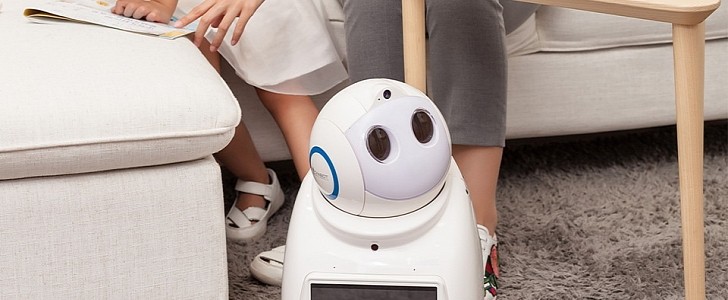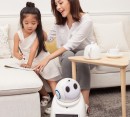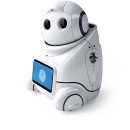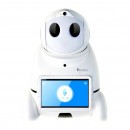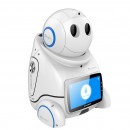It’s not surprising that people fear the idea of military robots that end up carrying and using weapons, but they even distrust the concept of medical robots. Instead of focusing on functions and capabilities, a research project at the Cardiff Metropolitan University in Wales is working on making robots look friendlier, as this is key to a greater acceptance.
Joel Pinney from the Cardiff Metropolitan University believes that although they can’t replace human doctors and nurses, robots could play an essential role for future healthcare, especially in the context of the ongoing health crisis. The problem is that, according to his research, people are still reluctant when it comes to robots operating in sensitive fields, such as medical services. And distrust is strongly connected to facial expressions, as human behavior studies have shown.
Pinney’s goal is to determine what exactly makes a robot be perceived as friendly and trustworthy. In a recent article, he shares that how he began testing the response to various human expressions, using a commercial robot called the Canbot-U03, designed for companionship and “house managing.”
Its first advantage is the “non-threatening” height of only 15.7” (40 cm). Pinney then manipulated both the robot’s expressions and the type of messages displayed on its chest screen, to find out how people would react to them.
The study showed that certain facial aesthetics are seen as more trustworthy than others. For example, people like robots that have eyes and a mouth, but they don’t like it when they mimic human features to perfection. Humanoid robots make us feel uncomfortable, and last year’s international scandal around an artist robot being suspected of espionage proved it. Cartoon faces are much more easily accepted, said Pinney.
The conclusion is that understanding and implementing the right human characteristics into robots is essential for making them socially acceptable in important fields, such as medicine or emergency services. Cyborgs don’t seem to be the answer for future medical robots, but a happy cartoon face can do wonders.
Pinney’s goal is to determine what exactly makes a robot be perceived as friendly and trustworthy. In a recent article, he shares that how he began testing the response to various human expressions, using a commercial robot called the Canbot-U03, designed for companionship and “house managing.”
Its first advantage is the “non-threatening” height of only 15.7” (40 cm). Pinney then manipulated both the robot’s expressions and the type of messages displayed on its chest screen, to find out how people would react to them.
The study showed that certain facial aesthetics are seen as more trustworthy than others. For example, people like robots that have eyes and a mouth, but they don’t like it when they mimic human features to perfection. Humanoid robots make us feel uncomfortable, and last year’s international scandal around an artist robot being suspected of espionage proved it. Cartoon faces are much more easily accepted, said Pinney.
The conclusion is that understanding and implementing the right human characteristics into robots is essential for making them socially acceptable in important fields, such as medicine or emergency services. Cyborgs don’t seem to be the answer for future medical robots, but a happy cartoon face can do wonders.
